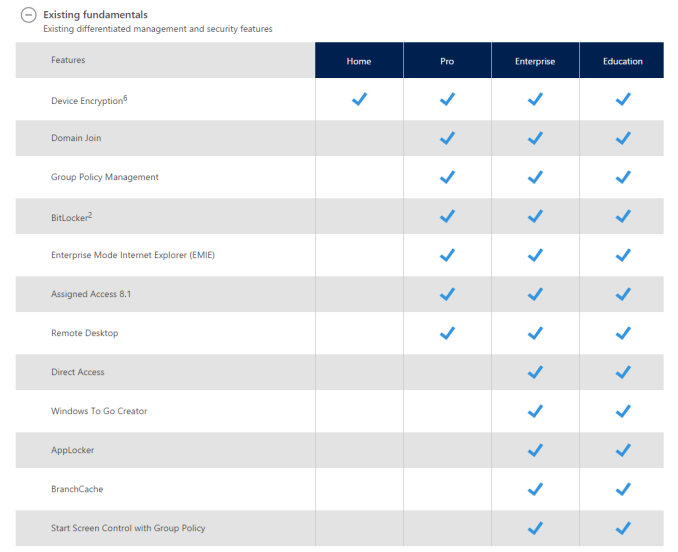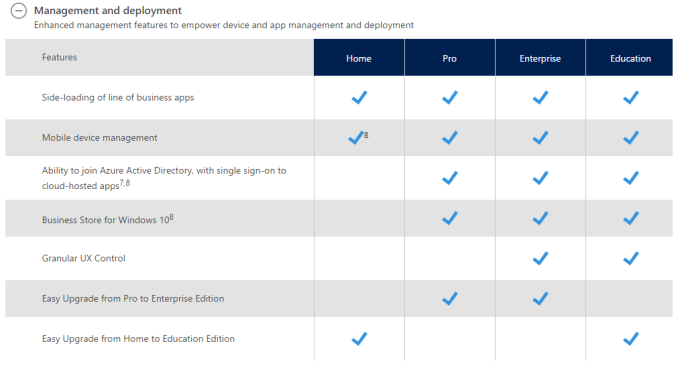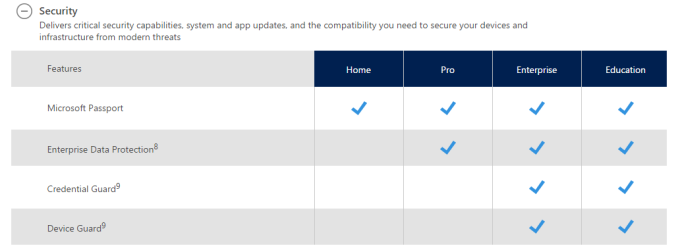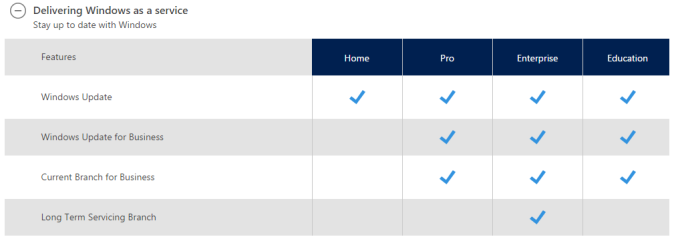Windows 10 Editions Compared
by Brett Howse on July 2, 2015 10:45 PM EST- Posted in
- Operating Systems
- Windows
- Microsoft
- Windows 10

Today Microsoft has finally created tables outlining what the different versions of the operating system are going to feature. It was back in May that they finally announced all of the versions of Windows 10 that are coming, but the actual features of each version was still a mystery. We could of course take an educated guess based on history, but as of today there is finally a list of all of the features broken down by version.
As a refresh, on the PC there are four basic versions. Home and Pro are the two that will be available for most people to purchase, and Enterprise is available to customers with volume licensing agreements. There is also an Education edition targeted towards that market.
As expected, Home has the fewest features available. Much like previous versions, there is no support to join an Active Directory domain, but that was not expected either. One thing that many users were hoping to see on Windows 10 Home is BitLocker support. BitLocker is Microsoft’s drive encryption suite, and Windows 10 Home does not have this unfortunately. There can still be encryption, but only as part of InstantGo, which was formerly known as Connected Standby. InstantGo is Connected Standby plus device encryption, and that is available to Home.
Windows 10 Pro keeps support for Remote Desktop, and it can of course join an Active Directory domain just as in prior versions. It also has access to the new Windows Update for Business service, but it must be kept on the Current Version branch.
Enterprise and Education are very similar, and both offer practically the same feature set. The one big difference is that Enterprise customers can opt into the Long Term Servicing Branch whereas Education customers cannot.
Pro, Enterprise, and Education also have access to the Business Store for Windows 10, and even the Home version supports side-loading of business apps.
One thing that is nice to see is that all versions feature support for Mobile Device Management, although the Home version will not have this support initially and it will be added at a later time.














66 Comments
View All Comments
extide - Saturday, July 4, 2015 - link
These limitations have always been the case, this is not a new thing with windows 10.ShieTar - Monday, July 6, 2015 - link
No Remote Desktop for Home users seems new.danbob999 - Monday, July 6, 2015 - link
The client will be there, just not the server. It's similar to previous windows versions.h4rm0ny - Monday, July 6, 2015 - link
Unfortunately what I need is the other way around. I want to be able to provide relatives with a cheap (well, affordable - not quite the same thing) Home edition and remote login to help with problems.Wolfpup - Monday, July 6, 2015 - link
Well bear in mind this has been the same with every consumer version of NT. For some reason in this thread people keep acting like 10 changes something when it looks pretty much identical to 8 which was the same as 7, Vista, and XP...deV14nt - Thursday, July 9, 2015 - link
Use Teamviewer. Even with access to RD, Teamviewer is usually less hassle.Dribble - Monday, July 13, 2015 - link
Just use Ammyy. http://www.ammyy.com/en/Cat Herder - Friday, May 13, 2016 - link
TeamViewer is what you need to support relatives. Free for non-professional use and really very good.Wolfpup - Monday, July 6, 2015 - link
No, that's always been a 'Pro' feature.extide - Saturday, July 11, 2015 - link
It's not new. No 'Home' version of windows has ever included RDP. This just the same its always been.